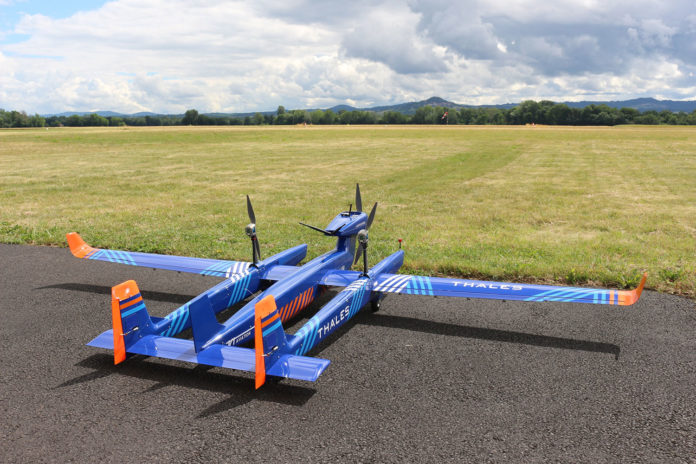The French company Thales has successfully completed the first flight of a half-scale prototype of its UAS100 unmanned air system with a range of more than 100 km (62 miles). It is expected to help meet the demand for more cost-effective drone missions with a lower environmental impact.
The UAS100 is developed in partnership with Issoire Aviation and Hionos and with the support of the French Ministry of the Armed Forces via the Defence Innovation Agency (AID).
The company claims the UAS100 complies with future European regulations for drone flights over populated areas. The long-range unmanned air system is designed to meet the requirements of a broad range of missions, including infrastructure inspection, coastal surveillance, border surveillance, event security, search-and-rescue, and military operations.
The prototype is half the size of the final version of the Thales UAS100, which is scheduled to fly in the second half of 2022. It will be able to fly even further – at a distance of about 200 km and carry up to 10 kilograms. At full scale, the UAS100 will have a wingspan of 5.4 meters. The weight of the drone is not reported, but it is indicated that Thales’s solutions are for the aerospace sector with the low weight and compact design needed for integration onboard a light UAV.
The UAS is powered by two electric motors as well as an internal combustion engine, guaranteeing the discretion needed to accomplish its missions and operate over populated areas while ensuring the necessary endurance and resilience to failure.
In addition to autonomy, the other problem with drones is signal loss and interference. A concern that Thales claims to have solved with a jam-resistant navigation system that will ensure safe operation even in dense or cluttered electromagnetic environments.
“With this new long-range UAS, Thales is providing the trusted solution needed for civil, government, and military inspection and security applications. As well as meeting today’s operational requirements, the new system paves the way for the air mobility solutions of tomorrow,” said Yannick Assouad, Executive Vice-President, Avionics, Thales.
